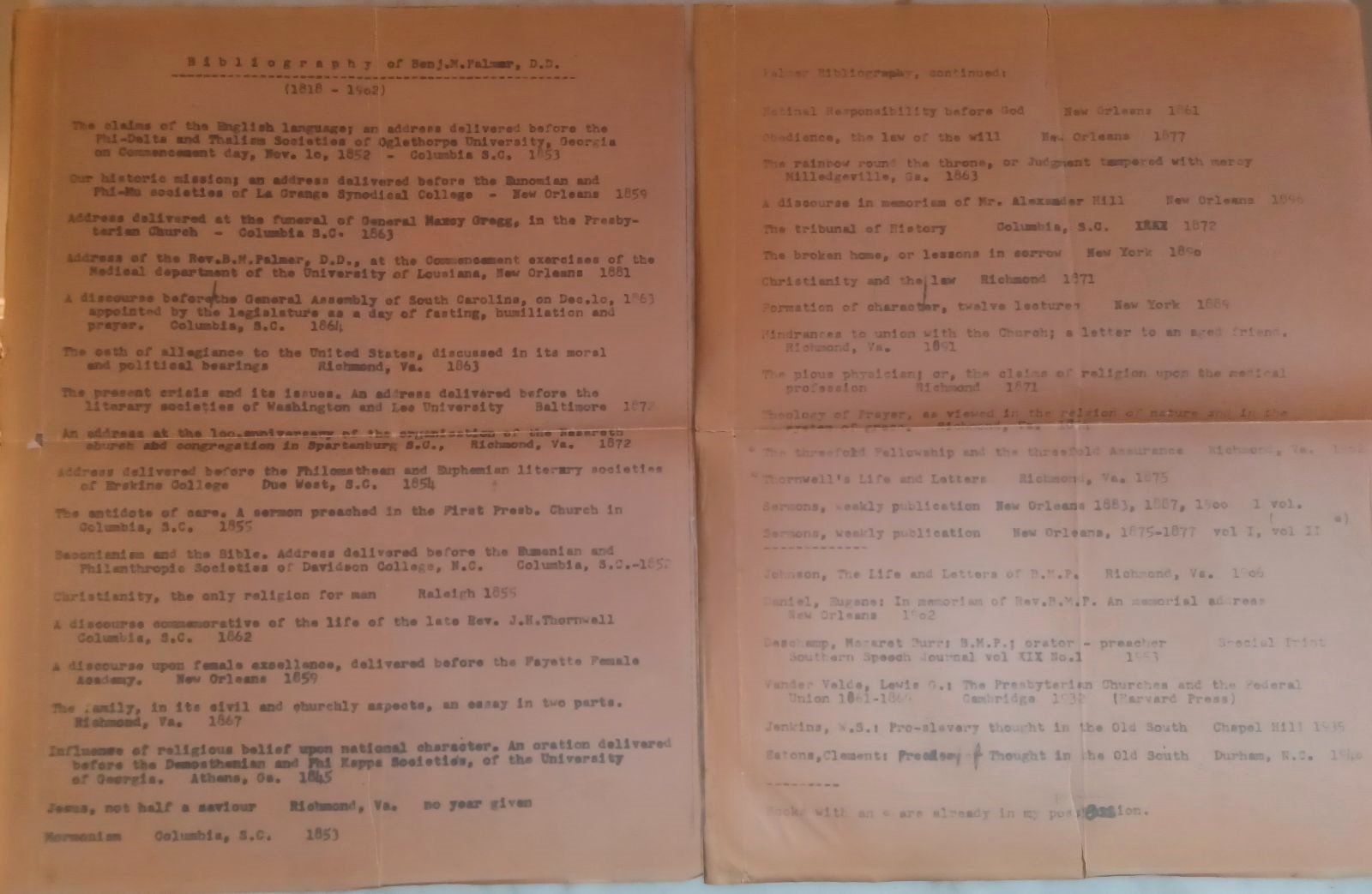Receive our blog posts in your email by filling out the form at the bottom of this page.
Have you read the 1853 sermon by Benjamin Morgan Palmer on the Warrant and Nature of Public Worship? A review in Cortlandt Van Rensselaer’s The Presbyterian Magazine (Vol. 4 [1854], p. 39) says that “This discourse belongs to the permanent documents of sacred literature” [italics in the original].
Delivered at the dedication of a new edifice for his church in Columbia, South Carolina, Palmer sketched three principles which relate to the raison d'être of any true place of public worship:
That man, endowed with a social nature, cannot attain the perfection which is possible to him, in the privacy and insulation of his own being.
Public worship is necessary to the Church, as the visible kingdom of Christ.
It is by means of the worship and ordinances of the sanctuary, this kingdom of Christ makes its aggressions upon the surrounding and opposing powers of darkness.
Palmer supports each proposition with Scriptural arguments, all derived from the text of John 4:23-24:
But the hour cometh, and now is, when the true worshippers shall worship the Father in spirit and in truth: for the Father seeketh such to worship him. God is a Spirit: and they that worship him must worship him in spirit and in truth.
We have the text of this sermon on Log College Press, which has been extracted from T.C. Johnson’s biography of Palmer. The original published discourse [not yet available on LCP] also includes at the end Palmer’s concluding prayer, akin to Solomon’s prayer at the dedication of the temple in 2 Chronicles 6. A portion of that prayer is found in the extract that is on Palmer’s page, but the final lines are not included in the extract. Those remaining lines from the original are given here to whet the reader’s appetite for the rest of the sermon.
And now, “O Lord God of Israel, which keepest covenant, and showest mercy unto thy servants that walk before thee with all their hearts! Behold the Heaven, and the Heaven of Heavens cannot contain thee; how much less this house which we have built! Have respect, therefore, to the prayers and supplications of thy servants; let thine eyes be open, and let thine ears be attent unto the prayer that is made in this place! Here choose Zion, and desire it for an habitation. Here abundantly bless her provision, and satisfy her poor with bread! Arise, O, Lord God, into thy resting-place, — thou, and the ark of thy strength; let thy priests, O, Lord God, be clothed with salvation, and let thy saints shout aloud for joy. Let these walls be called salvation, and these gates praise.”
Take time to peruse this valuable discourse here. It is an excellent reminder of why as Christians we gather together corporately to praise and exalt our God, and how God is thereby glorified and the work of the kingdom is advanced.































